Best Rust Programming Books to Buy in December 2025
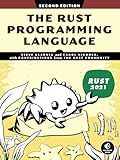
The Rust Programming Language, 2nd Edition


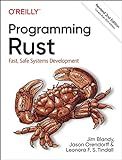
Programming Rust: Fast, Safe Systems Development


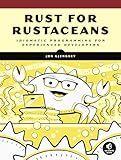
Rust for Rustaceans: Idiomatic Programming for Experienced Developers


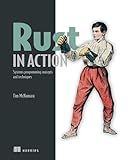
Rust in Action


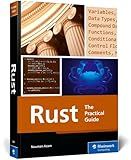
Rust Programming: A Practical Guide to Fast, Efficient, and Safe Code with Ownership, Concurrency, and Web Programming (Rheinwerk Computing)


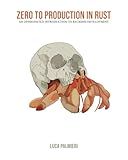
Zero To Production In Rust: An introduction to backend development


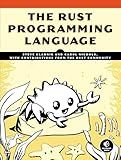
The Rust Programming Language


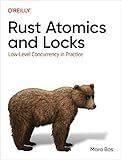
Rust Atomics and Locks: Low-Level Concurrency in Practice


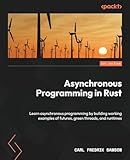
Asynchronous Programming in Rust: Learn asynchronous programming by building working examples of futures, green threads, and runtimes


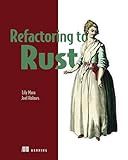
Refactoring to Rust


To make a HashSet of enum values in Rust, you first need to define the enum type with the variants you want to store in the set. Then, you can use the std::collections::HashSet type to create a HashSet and add enum values to it using the insert method. For example:
use std::collections::HashSet;
#[derive(Debug, PartialEq, Eq, Hash)] enum Color { Red, Green, Blue, }
fn main() { let mut colors = HashSet::new(); colors.insert(Color::Red); colors.insert(Color::Green);
println!("{:?}", colors); // HashSet { Red, Green }
}
In this example, we define an enum Color with variants Red, Green, and Blue. We then create a HashSet called colors and insert Color::Red and Color::Green into it. Finally, we print out the contents of the HashSet using println!.
What is the purpose of a hashset in Rust?
In Rust, a HashSet is a data structure that stores unique values in no particular order. It is typically used when you need to store a collection of items and quickly check if a specific item is already present in the collection. The main purpose of a HashSet in Rust is to provide efficient lookups, insertions, and deletions of unique values, by using a hash function to map values to buckets in a way that allows for quick retrieval. This can be useful in scenarios where you need to maintain a set of distinct values and efficiently check for membership.
How to create a hashset of enum values with a specific hash function in Rust?
In Rust, you can create a HashSet of enum values with a specific hash function by implementing the Hash trait for your enum and then providing a custom Hasher implementation that uses the specific hash function you want.
Here's an example of how you can achieve this:
use std::collections::HashSet; use std::hash::{Hash, Hasher};
// Define your enum #[derive(Debug, Eq, PartialEq)] enum MyEnum { Variant1, Variant2, }
// Implement the Hash trait for your enum impl Hash for MyEnum { fn hash<H: Hasher>(&self, state: &mut H) { match self { MyEnum::Variant1 => "Variant1".hash(state), MyEnum::Variant2 => "Variant2".hash(state), } } }
// Implement your custom hash function for the enum values struct CustomHasher(u64);
impl Hasher for CustomHasher { fn finish(&self) -> u64 { self.0 }
fn write(&mut self, bytes: &\[u8\]) {
self.0 += bytes.iter().fold(0, |acc, &byte| acc + byte as u64);
}
}
fn main() { // Create a HashSet with a custom hash function let mut set = HashSet::with_hasher(CustomHasher(0));
set.insert(MyEnum::Variant1);
set.insert(MyEnum::Variant2);
println!("{:?}", set); // Output: {Variant1, Variant2}
}
In the example above, we implemented the Hash trait for the MyEnum enum and provided a custom CustomHasher struct that implements the Hasher trait with a specific hash function. We then used the HashSet::with_hasher method to create a HashSet with the custom hash function.
You can modify the custom Hasher implementation to use your specific hash function for the enum values.
How to create a hashset of enum values that ignores case in Rust?
You can create a HashSet of enum values that ignores case by implementing the Hash and Eq traits for the enum, and then using a custom Hasher that ignores case. Here is an example implementation:
use std::collections::HashSet; use std::hash::{Hash, Hasher}; use std::collections::hash_map::DefaultHasher;
#[derive(Debug, Eq, PartialEq)] enum Color { Red, Green, Blue, }
impl Hash for Color { fn hash<H: Hasher>(&self, state: &mut H) { let lower_case = match self { Color::Red => "red", Color::Green => "green", Color::Blue => "blue", };
lower\_case.hash(state);
}
}
fn main() { let mut set = HashSet::new(); set.insert(Color::Red); set.insert(Color::Red);
for color in set {
println!("{:?}", color);
}
}
In this implementation, we define an enum Color with three variants. We then implement the Hash trait for Color, where we convert the enum variant to a lowercase string and hash it. This ensures that variants with different casing are considered equal when hashing.
Finally, we create a HashSet of Color values and insert two Color::Red variants. When iterating over the set, we see that only one Color::Red variant is present, as duplicates are ignored due to the custom hashing logic.
How to add elements to a hashset in Rust?
To add elements to a HashSet in Rust, you can use the insert method. Here's an example:
use std::collections::HashSet;
fn main() { // Create a new empty HashSet let mut hash_set: HashSet = HashSet::new();
// Add elements to the HashSet using the insert method
hash\_set.insert(1);
hash\_set.insert(2);
hash\_set.insert(3);
// Print the HashSet
for x in &hash\_set {
println!("{}", x);
}
}
In this example, we create a new empty HashSet of type i32. We then use the insert method to add elements 1, 2, and 3 to the HashSet. Finally, we use a loop to iterate over the HashSet and print each element.
How to define an enum in Rust?
To define an enum in Rust, you can use the enum keyword followed by the name of the enum and a set of possible values, like this:
enum Color { Red, Green, Blue, }
In the example above, we define an enum named Color with three possible values: Red, Green, and Blue. You can then use this enum in your code to represent different options or states.
